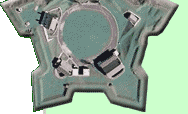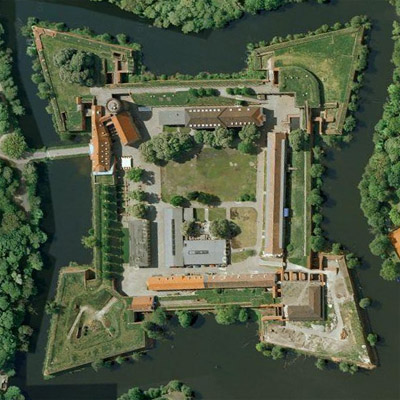 |
The city of Spandau is located where the Spee and Havel rivers meet, which made it a desirable location for a great many people through the middle ages: great place for a star fort! Built from 1559 to 1594 atop the remains of a medieval castle, the Citadel of Spandau was intended to protect the town, which is now part of Berlin.
The Swedes were the first to besiege the impressive fortification in 1675, unsuccessfully. Napoleon, however, managed to conquer the fort in 1806, left in 1807 but returned under much diminished circumstances in 1812, when the Citadel was besieged by Prussian and Russian troops, who were probably only hanging out together because their nationalities rhymed.
After the Germans finally managed to come out on top of the French in the Franco-Prussian War (1870-1871), much of the 120 million marks in gold coin that the French paid by way of reparations was kept in the fort's Julius Citadel (visible to the top left of the image above)...until it was returned to France in 1919. Way to hang on to that cash, Germany! The word Juliusturm is now used in Germany to refer to governmental budget surpluses.
In 1935 a laboratory was built in the Citadel for research into nerve gas. After the Second World War (1939-1945) the Russians finally got to occupy the Citadel, but disappointingly had to leave shortly thereafter when Spandau was made part of the British Sector of Berlin. Spandau Prison, where seven nazi war criminals were kept, was not located in the fort, but nearby in the city.
Today, Zitadelle Spandau is famous for its open air concerts during the Citadel Music Festival. |
 |











